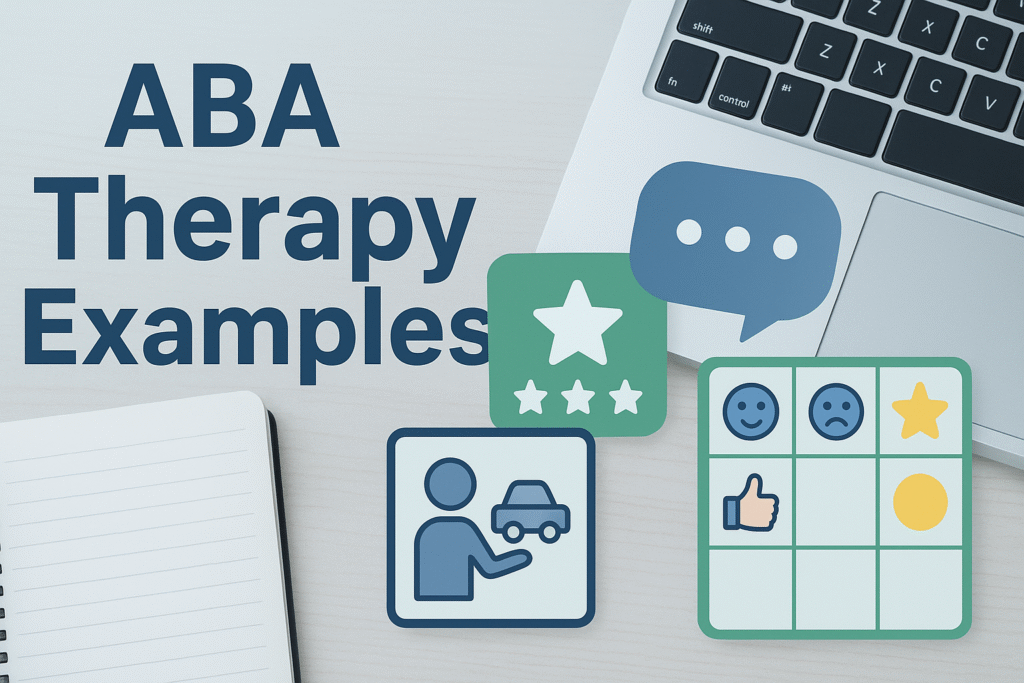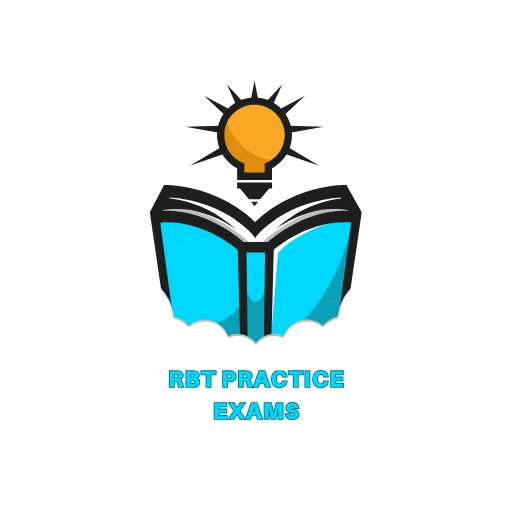Applied Behavior Analysis, often shortened to ABA, is one of the most widely used approaches to help children and adults with autism and other developmental needs. At its core, it focuses on how behavior works and how positive changes can be encouraged. But the question most people ask is simple: What does this look like in real life? That’s where ABA therapy examples come in. By looking at real-world applications, we can better understand how ABA works, whether at home, in the classroom, or during structured therapy sessions.
Table of Contents

What is ABA Therapy?
Applied Behavior Analysis (ABA) is a scientific approach to understanding and improving behavior. ABA therapists use evidence-based strategies to encourage helpful skills, reduce challenging behavior, and promote independence.
The Behavior Analyst Certification Board (BACB) oversees professional certification for ABA practitioners, including RBTs (Registered Behavior Technicians), BCaBAs, and BCBAs. If you’re preparing for your RBT credential, knowing ABA therapy examples is a vital part of your study and real-world practice.
Why ABA Therapy Examples Matter
Reading about ABA in theory is useful, but real-life examples make it easier to understand. Examples help:
Parents see how strategies can fit into daily routines.
Teachers apply ABA in classrooms.
RBT candidates prepare for the exam with practical context.
Children benefit from consistent learning across environments.
Common ABA Therapy Examples in Daily Life Positive Reinforcement
One of the most common strategies in ABA therapy is positive reinforcement. This means rewarding a behavior to increase the chance it will happen again. For example:
A child says “water” and immediately receives a drink.
A student completes homework and earns extra playtime.
Discrete Trial Training (DTT)
DTT breaks down skills into small, manageable steps. Each step has a clear instruction, response, and consequence. Example:
Therapist: “Touch your nose.”
Child touches nose receives praise or a token.
Natural Environment Teaching (NET)
Instead of structured drills, NET uses real-life situations for learning. Example:
During playtime, the child points to a toy truck, and the therapist encourages them to request it verbally.
Token Economy Systems
Tokens (like stickers, points, or stars) are earned for good behavior and later exchanged for a reward. Example:
A student earns tokens for staying seated and trades them in for extra recess.
Prompting and Fading
Prompts guide a child toward the correct response. Over time, prompts are reduced so the child responds independently. Example:
Therapist physically guides a child to wave “bye.” Over sessions, the prompt changes from hand-over-hand to just a verbal cue.
Social Skills Training
Many ABA programs target social interaction. Example:
Practicing eye contact by rewarding the child when they look at a peer while saying “hello.”
Functional Communication Training (FCT)
FCT replaces challenging behavior with communication. Example:
Instead of throwing a tantrum, a child learns to hand a picture card requesting “break.”
ABA Therapy Examples in the Classroom
Teachers often use ABA strategies without even realizing it. Examples include:
Rewarding group participation with class points.
Using visual schedules to reduce anxiety.
Reinforcing turn-taking during group activities.
These approaches not only support students with autism but also benefit the entire classroom.
ABA Therapy Examples for Parents at Home
Parents can apply ABA strategies daily without needing a full therapy session. Examples:
Reinforcing bedtime routines with a sticker chart.
Using praise when a child shares toys with siblings.
Offering choices “Do you want the red cup or the blue cup?” to reduce tantrums.
These small, consistent applications make home life smoother and more positive.
FAQs about ABA Therapy Examples What is an example of ABA therapy for autism?
A simple example is teaching a child to request items instead of crying. If they want a toy, the therapist teaches them to say “toy please” and rewards them with access to it.
How do RBTs use ABA therapy examples in practice?
RBTs use ABA strategies like reinforcement, prompting, and data collection to support behavior goals set by a BCBA. These skills are tested in the rbt practice exam and used daily with clients.
What are simple ABA activities parents can try?
Parents can try structured play, token boards, and consistent praise for following directions. Even small steps—like rewarding brushing teeth can build independence.
Preparing for the RBT Exam with ABA Therapy Examples
If you’re studying for the RBT credential, you’ll quickly see how important it is to know real-world ABA therapy examples. Many questions on the exam require you to apply ABA concepts to practical situations.
To strengthen your preparation:
Practice with scenario-based questions in an rbt practice test .
Try a full-length rbt mock test to test your knowledge under timed conditions.
Review real ABA case examples to connect theory with practice.
The better you understand ABA examples, the more confident you’ll feel on exam day and in actual client sessions.
Conclusion
ABA therapy is most powerful when it moves from theory into action. From positive reinforcement and token systems to social skills training and functional communication, these examples show how flexible and practical ABA can be. Whether you’re a parent supporting your child, a teacher building structure in the classroom, or an RBT preparing for certification, understanding these strategies is a key step forward.
Ready to test your knowledge? Start your rbt practice exam today and get closer to your certification goals.
